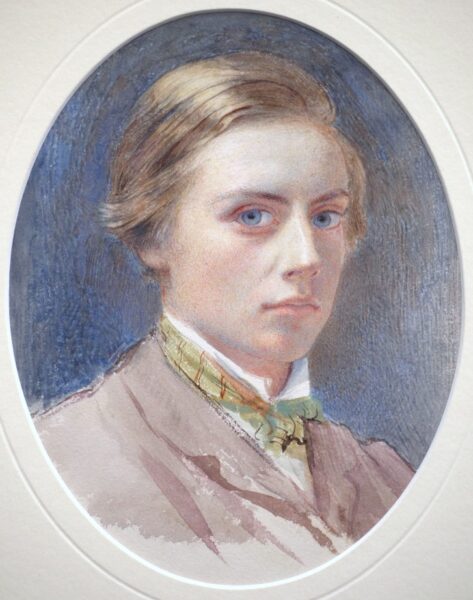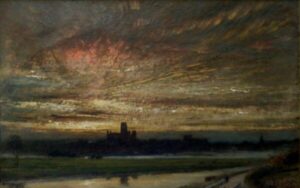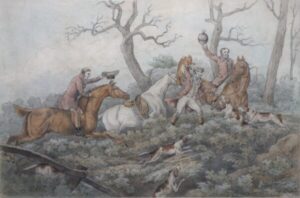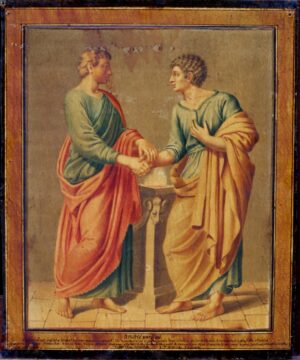Description
Watercolour: This delicate portrait was executed at a pivotal stage in William’s career when he chose to concentrate his efforts on making enough income to support himself and his future wife, Charlotte Foster (1841-65). They married on the 21 October 1864 and traveled to Ilfracombe in Devon for their honeymoon. Charlotte fell gravely ill soon after their arrival and was forced to return to London where she had been diagnosed with advanced consumption. Tragically she died on 13 December 1865.
William’s father, George Richmond also painted a portrait of himself at 21 (in miniature) which is in the collection of The National Portrait Gallery in London.
Etching: It would appear that William Richmond was not proficient at etching as neither the BM or the V&A have any etchings by him in their collections. Therefore it would seem likely that the portrait was an experiment to please himself.
Provenance: Mary Emily Hullah (b 1848-?): Second daughter of the English composer, conductor and teacher of music, John Pyke Hullah and his wife Caroline Hullah, née Foster. A novelist and contributor to, amongst others, The Girls Own Paper, The Woman at Home, the Family Herald and The English Illustrated Magazine. Caroline Hullah’s younger sister Charlotte Foster married William Blake Richmond in 1864.
Brand
Richmond, Sir William Blake (1842-1921)
William Blake Richmond was a most versatile artist. He was a painter of portraits, narrative pictures and occasionally landscapes. He also made sculpture and was responsible for the mosaic decoration in St. Paul's Cathedral. He was born 1842, the son of the artist George Richmond RA, who named him after his early friend the poet painter and mystic, William Blake.
Richmond attended the Royal Academy Schools, where he was awarded two silver medals. He was influenced by the newly successful Pre-Raphaelite painters Holman Hunt and Millais, but even more by their enthusiastic advocate, the writer and critic John Ruskin. Richmond began his career painting pictures inspired by poetry, classical legend or stories from the Bible. He continued with such subjects until the end of the 19th century. During the 1860s and 70s he became a most successful portrait painter. Amongst others, he painted Charles Darwin, William Morris, the poet Robert Browning and the Prime Minister WE Gladstone twice. Richmond was the Slade Professor of Fine Art between 1878 and 1883. He became a member of the Royal Academy in 1895 and was knighted in 1897. In 1899 he was President of the Society of Miniature Painters. His grandfather Thomas Richmond was a well-known miniature painter.
Richmond's reputation as an artist rests on his portraits and on the large paintings such as 'Venus and Anchises'. At his funeral in February 1921 there were wreathes from Princess Louise, Duchess of Argyll, The Royal Academy and the Coal Smoke Abatement Society, of which Richmond was the founder. His coffin was described in The Times as, 'perfectly plain...and the handles which were of wrought iron, were of William Morris design'.



